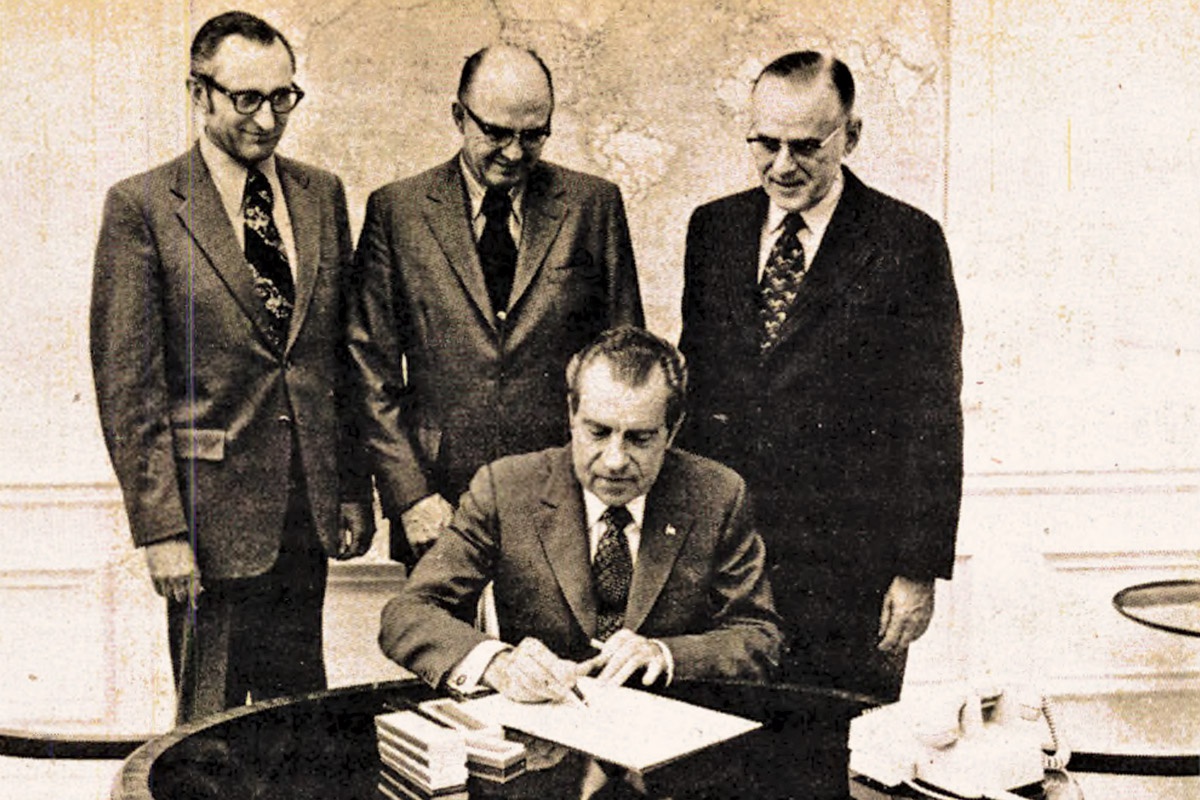Co-op life has never been easy. During the early decades of rural electrification, cooperatives in America had to defend themselves from special interests, with private electric companies and politicians often leading the charge.
Possibly the highest-profile attack on co-ops began just after Christmas in 1972. The Nixon administration directed the U.S. Department of Agriculture to announce that, effective January 1, 1973, it would deny funds already authorized by Congress for the Rural Electrification Administration’s upcoming fiscal year and then terminate the agency’s direct loan program. For 36 years, this program had enabled the REA to offer loans to co-ops at 2% interest.
President Richard M. Nixon’s plan was to replace the federally funded REA loans with commercially backed loans that would be offered at 5% interest. This move, designed to cut more than $200 million in federal spending, would gut the rural co-op system by impounding the federal funds already allocated to hundreds of electric and telephone co-ops. In addition to taking away the loans that had been approved, this action would more than double the interest rates others would have to pay on new loans.
Robert D. Partridge, then-general manager of the National Rural Electric Cooperative Association, said the action would “wipe out many of the more than 1,000 rural electric systems and… threaten the welfare of millions of consumers who depend on them.” Many co-ops would no longer be able to offer service to people in outlying areas. That same winter, co-op systems across the country were suffering severe damage from ice storms, but they were left without access to the emergency funding customarily offered by the REA.
Co-ops didn’t take the new policy lying down. On January 23, three weeks after the USDA’s announcement, 1,400 electric co-op representatives from the 46 states across the country with electric cooperatives (including 135 Texans) converged on Washington, D.C. Participants traveled to the Rural Electric Rally to persuade their representatives in Congress to restore the REA direct loan program.
Lawmakers rode to co-ops’ rescue with legislation that would allow the REA to extend loans in the full amount authorized each year. They also established the Rural Electrification and Telephone Revolving Fund that allowed for a standard interest rate of 5%, plus a special interest rate of 2% for those eligible. The Senate and House bills both passed quickly, and the fate of co-ops hung on Nixon’s pen.
Finally, on the REA’s 38th birthday—May 11, 1973, exactly 19 weeks after first issuing the order that would have crippled the agency out of his “concern for the nation’s economy”—Nixon signed the new legislation implementing a modified direct loan program for the REA. Ironically, this new arrangement resulted in greater co-op financing than ever.
More than $1.2 billion was made available to rural electric and telephone co-ops in 1973, the highest amount of loans granted in the program’s history. The REA administrator’s report from that year notes, “Fiscal 1973 was a remarkable year in the history of the Rural Electrification Administration.”
Ellen Stader is a writer in Austin.


